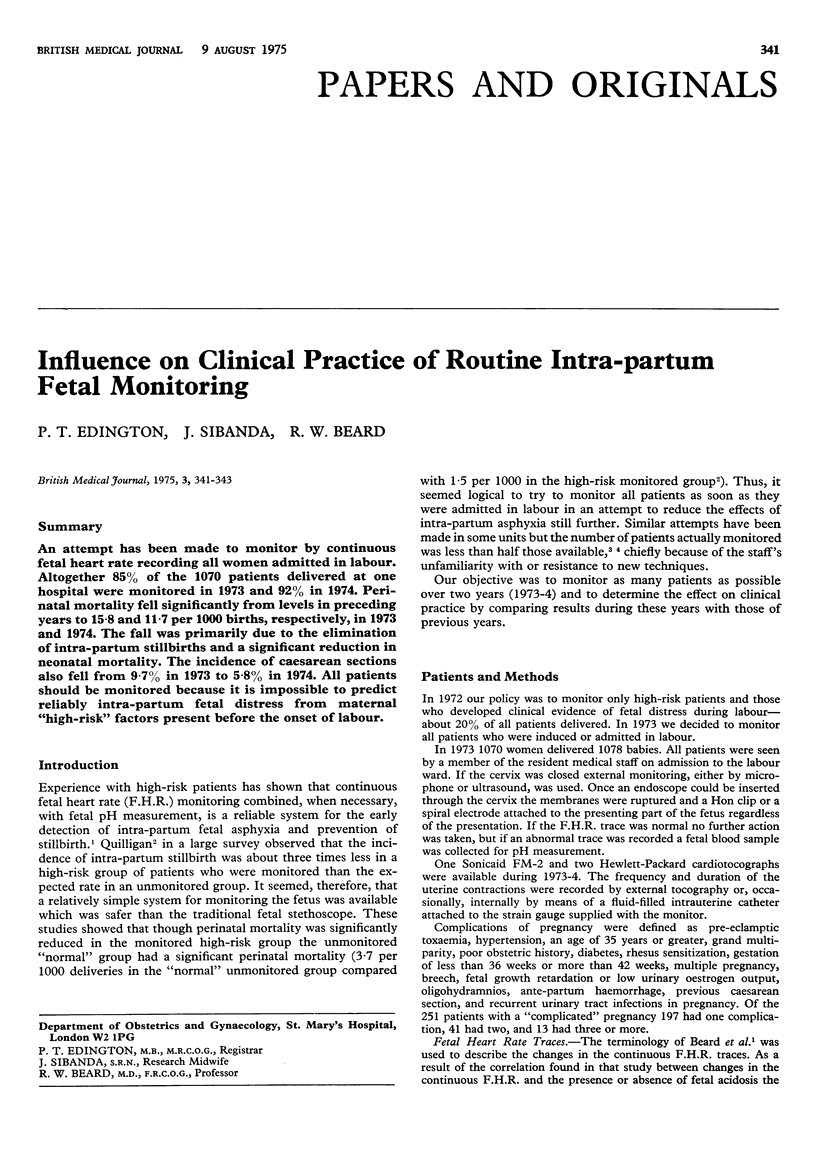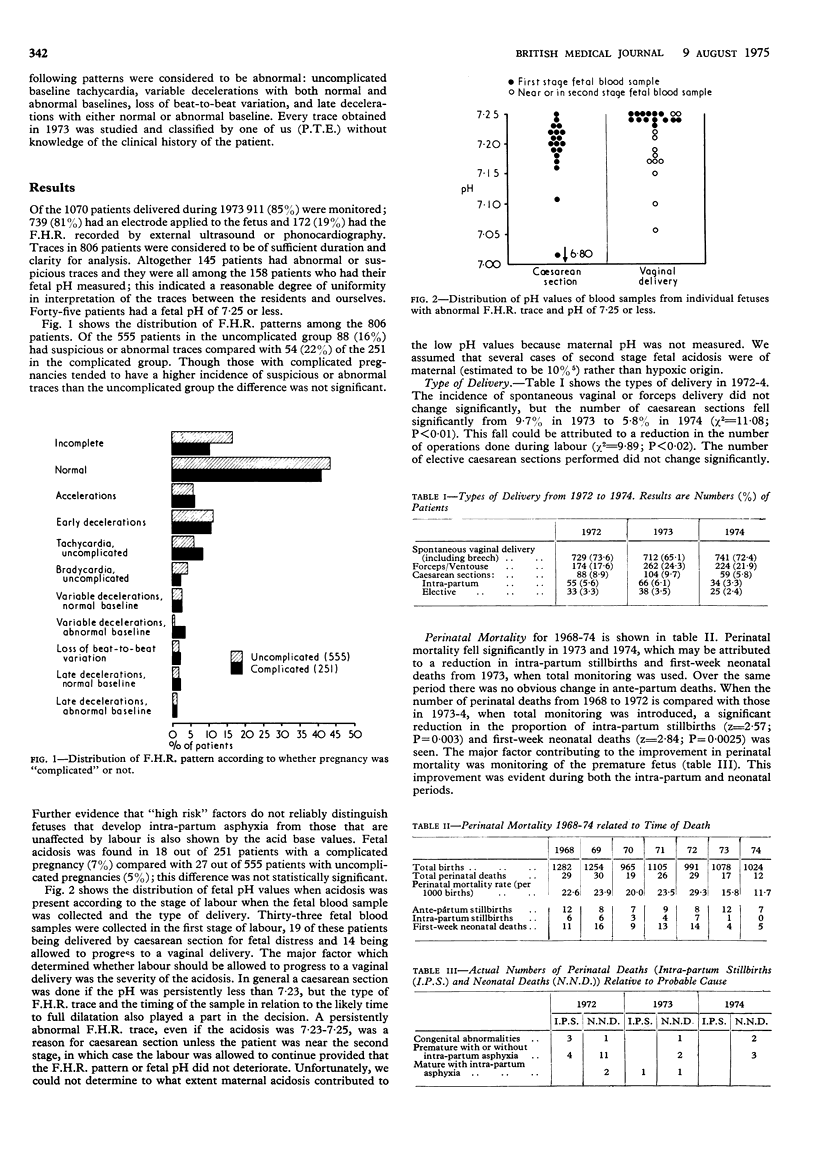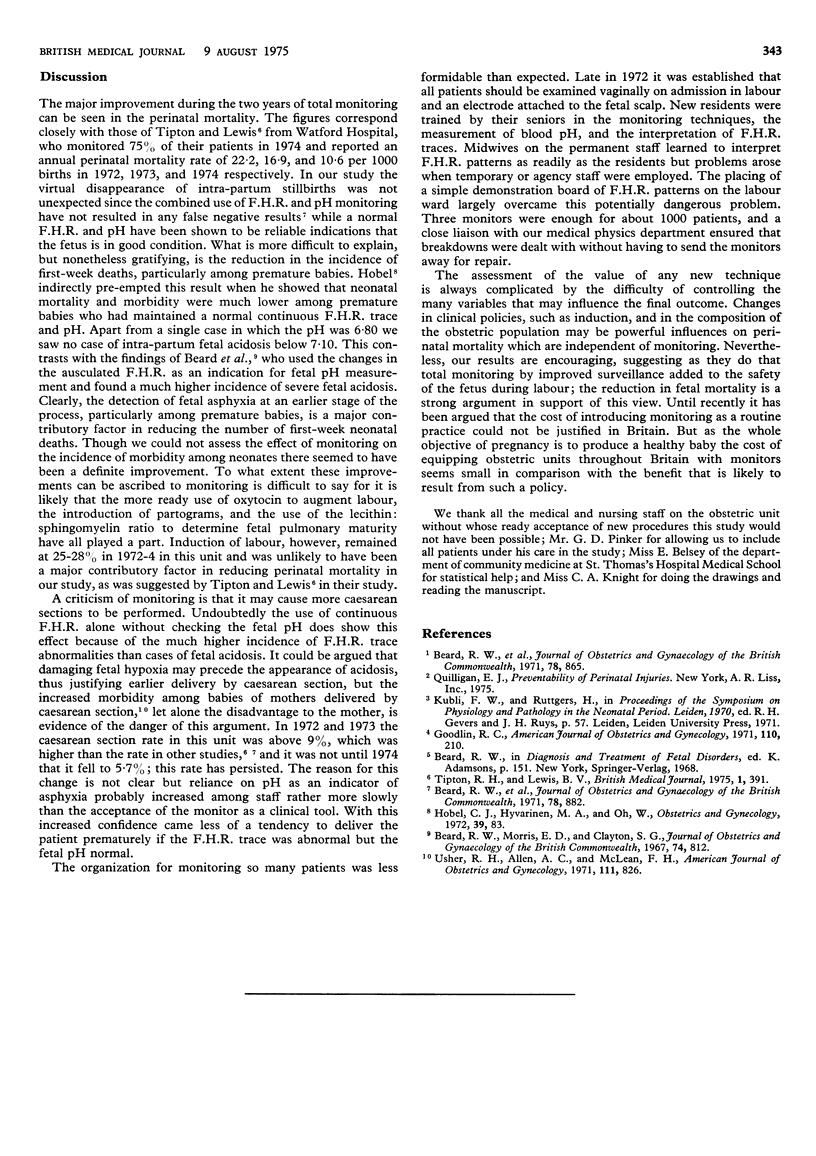Abstract
An attempt has been made to monitor by continuous fetal heart rate according all women admitted in labour. Altogether 85% of the 1070 patients delivered at one hospital were monitored in 1973 and 92% in 1974. Perinatal mortality fell significantly from levels in preceding years to 15-8 and 11-7 per 1000 births, respectively, in 1973 and 1974. The fall was primarily due to the elimination of intra-partum stillbirths and a significant reduction in neonatal mortality. The incidence of caesarean sections also fell from 9-7% in 1973 to 5-8% in 1974. All patients should be monitored because it is impossible to predict reliably intra-partum fetal distress from maternal "high-risk" factors present before the onset of labour.
Full text
PDF


Selected References
These references are in PubMed. This may not be the complete list of references from this article.
- Beard R. W., Morris E. D., Clayton S. G. pH of foetal capillary blood as an indicator of the condition of the foetus. J Obstet Gynaecol Br Commonw. 1967 Dec;74(6):812–822. doi: 10.1111/j.1471-0528.1967.tb15562.x. [DOI] [PubMed] [Google Scholar]
- Goodlin R. C. Intrapartum fetal heart rate responses and plethysmographic pulse. Am J Obstet Gynecol. 1971 May 15;110(2):210–226. doi: 10.1016/0002-9378(71)90608-9. [DOI] [PubMed] [Google Scholar]
- Hobel C. J., Hyvarinen M. A., Oh W. Abnormal fetal heart rate patterns and fetal acid-base balance in low birth weight infants in relation to respiratory distress syndrome. Obstet Gynecol. 1972 Jan;39(1):83–88. [PubMed] [Google Scholar]
- Tipton R. H., Lewis B. V. Letter: Induction of labour and perinatal mortality. Br Med J. 1975 Feb 15;1(5954):391–391. doi: 10.1136/bmj.1.5954.391. [DOI] [PMC free article] [PubMed] [Google Scholar]
- Usher R. H., Allen A. C., McLean F. H. Risk of respiratory distress syndrome related to gestational age, route of delivery, and maternal diabetes. Am J Obstet Gynecol. 1971 Nov;111(6):826–832. doi: 10.1016/0002-9378(71)90495-9. [DOI] [PubMed] [Google Scholar]


